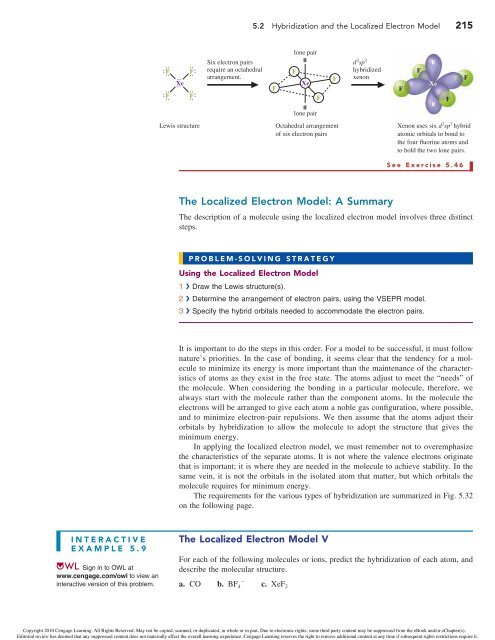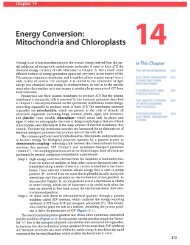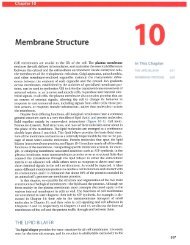Ch05 Molecular Structure and Orbitals.pdf - finedrafts
Ch05 Molecular Structure and Orbitals.pdf - finedrafts
Ch05 Molecular Structure and Orbitals.pdf - finedrafts
You also want an ePaper? Increase the reach of your titles
YUMPU automatically turns print PDFs into web optimized ePapers that Google loves.
I N T E R A C T I V E<br />
EXAMPLE 5.9<br />
Sign in to OWL at<br />
www.cengage.com/owl to view an<br />
interactive version of this problem.<br />
Xe<br />
Six electron pairs<br />
FF<br />
require an octahedral<br />
arrangement.<br />
FF<br />
Lewis structure Octahedral arrangement<br />
of six electron pairs<br />
5.2 Hybridization <strong>and</strong> the Localized Electron Model 215<br />
The Localized Electron Model: A Summary<br />
See Exercise 5.46<br />
The description of a molecule using the localized electron model involves three distinct<br />
steps.<br />
PROBLEM-SOLVING STRATEGY<br />
Using the Localized Electron Model<br />
1 ❯ Draw the Lewis structure(s).<br />
2 ❯ Determine the arrangement of electron pairs, using the VSEPR model.<br />
3 ❯ Specify the hybrid orbitals needed to accommodate the electron pairs.<br />
It is important to do the steps in this order. For a model to be successful, it must follow<br />
nature’s priorities. In the case of bonding, it seems clear that the tendency for a molecule<br />
to minimize its energy is more important than the maintenance of the characteristics<br />
of atoms as they exist in the free state. The atoms adjust to meet the “needs” of<br />
the molecule. When considering the bonding in a particular molecule, therefore, we<br />
always start with the molecule rather than the component atoms. In the molecule the<br />
electrons will be arranged to give each atom a noble gas con guration, where possible,<br />
<strong>and</strong> to minimize electron-pair repulsions. We then assume that the atoms adjust their<br />
orbitals by hybridization to allow the molecule to adopt the structure that gives the<br />
minimum energy.<br />
In applying the localized electron model, we must remember not to overemphasize<br />
the characteristics of the separate atoms. It is not where the valence electrons originate<br />
that is important; it is where they are needed in the molecule to achieve stability. In the<br />
same vein, it is not the orbitals in the isolated atom that matter, but which orbitals the<br />
molecule requires for minimum energy.<br />
The requirements for the various types of hybridization are summarized in Fig. 5.32<br />
on the following page.<br />
The Localized Electron Model V<br />
For each of the following molecules or ions, predict the hybridization of each atom, <strong>and</strong><br />
describe the molecular structure.<br />
a. CO b. BF 4 c. XeF2<br />
F<br />
lone pair<br />
F<br />
Xe<br />
lone pair<br />
F<br />
F<br />
d 2 sp 3<br />
hybridized<br />
xenon<br />
F<br />
F<br />
Xe<br />
F<br />
F<br />
Xenon uses six d 2 sp 3 hybrid<br />
atomic orbitals to bond to<br />
the four uorine atoms <strong>and</strong><br />
to hold the two lone pairs.<br />
Copyright 2010 Cengage Learning. All Rights Reserved. May not be copied, scanned, or duplicated, in whole or in part. Due to electronic rights, some third party content may be suppressed from the eBook <strong>and</strong>/or eChapter(s).<br />
Editorial review has deemed that any suppressed content does not materially affect the overall learning experience. Cengage Learning reserves the right to remove additional content at any time if subsequent rights restrictions require it.






